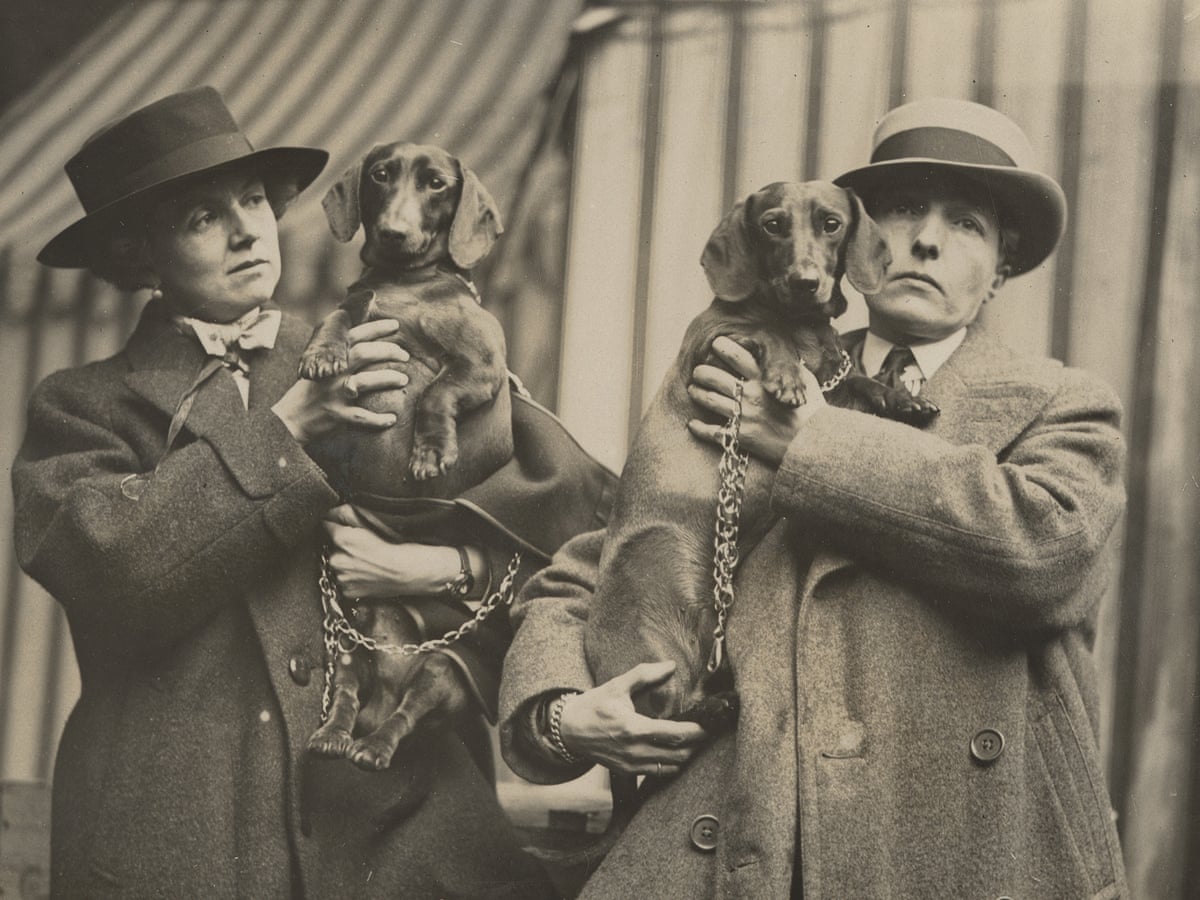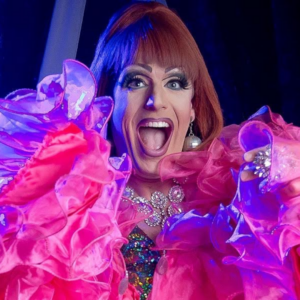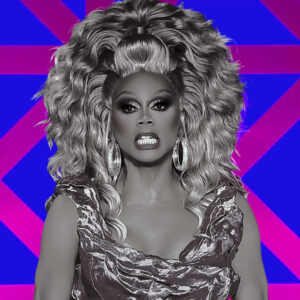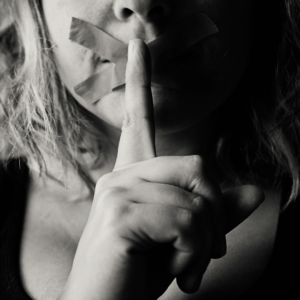The Crufts Dog Show, February 1923. A figure named John, with short hair, trousers, a waistcoat, and a Panama hat steps out from their car. They are accompanied by their award-winning dachshunds and a female companion. But John is in fact a woman named Radclyffe Hall, and the companion is her lesbian lover, Una. Her masculine clothing is not just risqué, for many, it’s an unnatural abomination, as is her sexuality. But Radclyffe’s radicalism was far more than wearing men’s clothes, and her lesbianism, attitudes, and especially her writing would bombard society with a new world of queer culture.

Early Life
Radclyffe was born Marguerite Antonia Radclyffe Hall was born on 12 October 1880 in Bournemouth. Her father, Radclyffe, had inherited a fortune from his father, an eminent doctor and head of the British Medical Association, and spent it chasing other women. Her mother was Mary Jane Sager, a widow from Philadelphia who suffered mental health issues.
In 1882, Radclyffe’s father abandoned his family, and she was left alone with her mother. Their relationship was disastrous; Mary frequently told Radclyffe she was the unwanted outcome of a failed abortion and regularly stole from the huge inheritance Radclyffe’s father had left her.
When old enough to leave home, Radclyffe realised she had enough money to never have to work. With no job and little education, Radclyffe moved to London and spent her twenties travelling Europe and pursuing her favourite pastime… other women.
Lesbianism and Sexology
In 1885, the Labouchere Amendment was passed, making any homosexual act between two men illegal and punishable by two years of hard labour. It was the law that spelt doom for gay writers like Oscar Wilde, who was imprisoned in 1897.
But whilst the law forbade homosexual acts between men, societal views of women as non-sexual beings meant lesbianism, whilst taboo, was not illegal. Two women living together was never seen as suspicious or promiscuous, and several rich lesbians in the UK and America had ‘Boston marriages’, where two female companions cohabited, sometimes romantically but not always.
Whilst governments were passing laws against homosexuality, scientists were busy researching the nature of same-sex desire and its origins, known as the study of Sexology. Sexologists such as Richard von Krafft-Ebing from Germany and Havelock Ellis from England argued that homosexuality, far from a criminal act or illness, was perfectly natural. Havelock Ellis coined the term ‘sexual inversion’. This argued that gay men and lesbians were people who appeared physically male or female on the outside but felt internally that they were of the opposite anatomical sex; their homosexuality was therefore just ‘latent heterosexuality’ as they were ‘born in the wrong body’.

Radclyffe, free from prosecution and with enough money to avoid marriage, absorbed all these studies and openly called herself a ‘sexual invert’. She adopted the role of the ‘mannish lesbian’ by renouncing traditional female dress and wearing trousers, monocles, hats and cutting her hair short. In a world where gender roles and dress were strictly enforced (the first ‘trousers’ for women were only introduced in the 1910s) Radclyffe’s personality, and especially her openness about it, was at best enormously controversial, at worst disgusting.
Mabel and Una
In August 1907, whilst travelling Germany, Radclyffe met the well-known opera singer Mabel Batten at Bad Homburg. Radclyffe was 27 and Mabel 51 but they quickly fell in love and when Mabel’s husband died, she joined Radclyffe in her house in Cadogan Square, London. There, Mabel introduced Radclyffe to several intellectual and artistic lesbians (Gertrude Stein may have been among them) and gave her the name ‘John’, which Radclyffe used as her chosen name for the rest of her life.
In 1915, Mabel introduced Radclyffe to her cousin, the talented sculptor and translator Una Vincenzo, Lady Troubridge. Una and Radclyffe became lovers almost instantly and after Mabel died the following year, Una moved in with heartbroken Radclyffe. Guilty about Mabel’s death, they became avid spiritualists and conducted several seances where they believed they received advice from Mabel beyond the grave.
Una officially separated from her husband in 1919. She and Radclyffe renovated their Stirling Street house themselves and spent their time raising dachshunds and griffon dogs to enter into shows together. The two became each other’s soulmates and would spend the rest of their lives together. Una would go to write in her diary: ‘I could not, having come to know her, imagine life without her.’

Early Writing
Despite writing five books of poetry between 1906 and 1915, Radclyffe only really began writing in the 1920s.
Her first novel, The Unlit Lamp was published in 1924. It told the story of Joan Ogden, who dreams of breaking free from her overbearing mother and becoming a doctor. She also longs to buy a flat and have a Boston marriage with her ‘friend’ Elizabeth. The lesbian tones of the story are highly ambiguous and so it was not considered inappropriate, but its length and grimness meant it did not sell well.
Radclyffe had much more success with her two comic novels, The Forge (1924) and A Saturday Night Life (1925), and her 1926 novel Adam’s Breed, about a disenchanted waiter who abandons modern life to become a hermit, won her several awards and made her a household name.
But Radclyffe grew tired of writing mainstream literature. She longed to write a book about the experiences of her fellow homosexuals and ‘smash the conspiracy of silence’ around lesbianism. She would do so in her 1928 masterpiece, The Well of Loneliness.
The Well of Loneliness
Radclyffe began writing The Well in 1926 after the success of Adam’s Breed. She was determined the book cover the happiness but also social isolation, rejection, and self-hatred typical of gay life in the period. She made it clear to her publisher that not a single word was to be changed, arguing “I have put my pen at the service of some of the most persecuted and misunderstood people in the world”.
The book tells the story of masculine lesbian Stephen Gordon. Her parents had been expecting a boy and so gave her a male name and from the beginning she hates dresses, wants to cut her hair short, and longs to be a boy.
Unlike The Unlit Lamp, the lesbianism in The Well was unapologetic and blatant. Stephen first falls for a housemaid aged seven. Aged 21, she falls for neighbour Angela Crossby and in one scene together, ‘Stephen took Angela into her arms, and kissed her full on the lips, as a lover.’ In another scene with her second lover, Mary Llewellyn, whom Stephen meets serving as a nurse in WW1, ‘Stephen bent down and kissed Mary’s hands…and that night they were not divided.’
The novel was Radclyffe’s opportunity to popularise the writings of the sexologists on the naturality of homosexuality. In one scene, Stephen is confronted by her mother about her ‘unnatural cravings of your unbalanced mind and undisciplined body’ after discovering her affair with Angela, to which she argues, ‘as my father loved you, I loved. As a man loves a woman, that’s how I loved… It was good, good, good’. Stephen then discovers a copy of Krafft-Ebbing’s works in her late father’s study and realises she is an ‘invert’, finding comfort in the fact she is perfectly natural.
But the book also sensitively highlights both the social isolation and hopelessness of the gay experience. Everyone Stephen loves she loses. Angela returns to her husband, Stephen cannot be public about her affair with Parisian hostess, Valerie Seymour, and the book ends with her sad realisation that she can never make her beloved Mary happy and so she forces her to leave and marry a man. In the final line, Stephen cries to God “Give us also the right to our existence.”
‘The Book That Must Be Suppressed’
When it was published on 28 July 1928, The Well of Loneliness received mixed reviews. Some argued it was too preachy, whilst others (including Virginia Woolf) argued it was poorly structured. What united them all was that none took offence to the book’s display of lesbianism and no voices were raised calling for its suppression.
One person who disagreed was James Douglas, editor of the Sunday Express and ‘dedicated moralist’ who was against almost everything. On Saturday 18 August 1928, copies of the Daily Express and billboards across England featured posters advertising Douglas’s upcoming article ‘The Book That Must Be Suppressed’. The following day, his article was published.
Douglas completely harpooned The Well, calling it ‘a seductive and insidious piece of special pleading’ which displayed ‘perverted decadence as a martyrdom inflicted upon these outcasts by a cruel society.’ He argued ‘sexual inversion and perversion’ were becoming dangerously prominent and The Well brought home the need for society to ‘cleanse itself from the leprosy of these lepers.’ Above all, children were to be protected from this ‘propaganda’: ‘I would rather give a healthy boy or a healthy girl a phial of prussic acid (hydrogen cyanide) than this novel.’ He ended by calling on the publisher to withdraw the novel and the Home Secretary to take swift action.
Jonathan Cape, Radclyffe’s publisher, duly sent a copy of The Well to the Home Secretary, William Joynson-Hicks, in a move Radclyffe herself called ‘imbecility’. The Conservative Joynson-Hicks agreed with Douglas that it was ‘gravely detrimental to the public interest’ and that if publication was not ceased then criminal proceedings would begin.
But the irony was that Douglas’s campaign (now supported by several newspapers) was greater publicity than anything Cape could wish for; copies were selling out everywhere. So, whilst he told the government he had stopped publication, he in fact had leased the rights to Pegasus Press in France, who imported copies into the UK and therefore avoided the injunction. But the plot was soon uncovered, and the Home Secretary commanded the Chief Magistrate, Sir Chartres Biron, to begin an obscenity trial.

Yet Radclyffe was not without her supporters. Despite disliking the book and its author’s radical lesbianism, Virginia Woolf was affronted by government efforts to censor literature and assembled a group that included E.M. Forster, George Bernard Shaw, H.G. Wells, T.S. Eliot, and Vera Brittain. Together they signed a letter in protest of the book’s suppression and arranged a defence for The Well’s trial. Unfortunately, when the trial began on 9 November 1928, Chief Magistrate Biron said their defence would be heard: “I don’t think people are entitled to express an opinion upon a matter which is the decision of the court”; not even Radclyffe could speak up for her book.
The publisher’s lawyer had the initial defence that the book contained only Platonic relationships and no lesbianism. But Radclyffe told him that if he argued that then she would stand up in court and tell the truth before anyone could stop her. Instead, the lawyer argued The Well’s literary merit as a reason for its preservation. But the conservative Chief Magistrate was uninterested. Sir Chartres argued The Well’s literary merit was no defence as ‘a well-written obscene book was even more harmful than a poorly written one.’ His verdict was that The Well of Loneliness was an obscene book; publishing was to cease immediately and all existing copies of it were to be destroyed.
Life after The Well
Whilst always standing by her book and never renouncing her beliefs and attitudes, Radclyffe was shaken by the aftermath of The Well’s publication. She was particularly affected by a satirical lampoon distributed at the time called The Sink of Solitude. Whilst it mainly targeted Douglas and the Home Secretary, it did feature an illustration of Radclyffe nailed to a cross in reference to the theme of religious martyrdom in The Well. For the devoutly Catholic Radclyffe the image was horrifyingly blasphemous, and she would not speak of it for years.

She wrote only one book after The Well, the religious novel The Master of the House in 1932. But to ensure good sales, Radclyffe was forced to remove the cover blurb and use a plain book sleeve. Pre- and initial sales were good, but a series of bad reviews meant the book soon slumped.
In the 1930s, she and Una (who had remained by her side throughout the trial) moved to Rye in East Sussex. There Radclyffe engaged in several lesbian affairs, including one with the African American singer and actress Ethel Waters.
Whilst on holiday in 1934, Radclyffe contracted enteritis and began a nine-year affair with her Russian nurse Evguenia Souline. Una was noticeably upset and hurt by Radclyffe’s open affair but remained with her beloved partner and all three women moved down to Devon after the outbreak of World War Two.
In 1943, Radclyffe was diagnosed with bowel cancer and several attempts at surgery proved unsuccessful. She died on 7 October 1943, aged 63. Her ashes were buried next to those of her first lover, Mabel Batten, at the Circle of Lebanon in Highgate Cemetery, London.

















